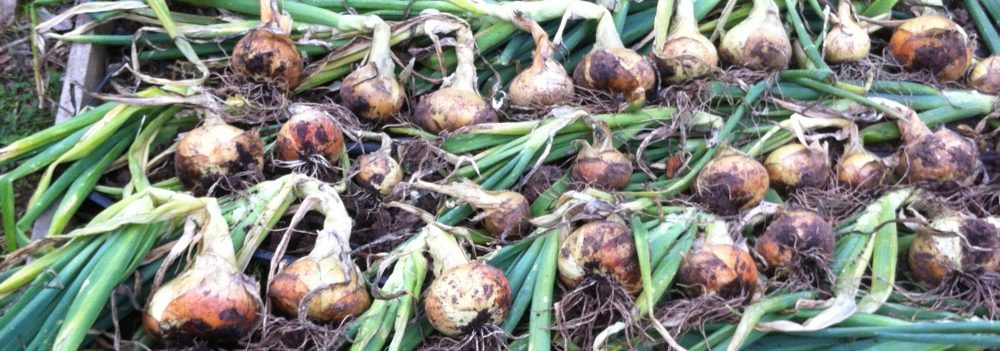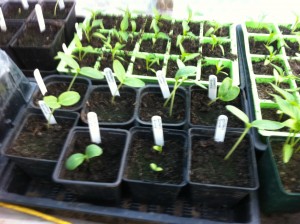As we enter the last week of January I get very itchy fingers and the urge to sow becomes all consuming. So today I set the thermostat in the propagator in my greenhouse to 24 degrees, mixed a load of seed compost (3 parts John Innes soilless seed compost with one part low peat multi-purpose), selected my seeds, prepared some trays, loo-rolls and root-trainers and got to work.
This year I will be growing fewer new varieties of tomato and capsicum, concentrating on some old favourites and grwoing for fresh supplies of seed. So, I sowed into four inch pots a sprinkling each of these tomatoes; Nello’s Plum, an heirloom Italian tomato from Tuscany; Washington Cottage, an escapee from a US research centre which yields an abundance of small super-sweet fruit; Sungold, a popular yellow and very sweet cherry tomato; Small Red Pear, a gift from an HSL seed guardian which produces bunches of long trusses of tiny fruit and a local variety of Syrian indertimante that I am intrigued to see how it will turn out.
I sowed eight varieties of capsicum – Ukraine, one of my favourie discoveries which I have been growing for the last 25 years, having discovered this hot, sweet, three-lobed pepper in a market in Donetsk. This year I am growing from seed saved in 2003 inorder to refresh the supply; a long Syrian chilli from a local seed supplier – Future Seeds – simply called Flefleh; another sweet pepper with a rugged shape simply called Flefleh Helweh; a hot sweet small pepper from Syria given to me by a local farmer; a small sweet pepper from Tobago, originally collected by my dentist’s husband; Pasilla Bajo, a south American hot sweet paprika type which is a deep chocolate colour and one of my favourite sweet chilli peppers I found many years ago in the Moroccan desert I simply call Morocco.
I also sowed some Up to Date onion seed that I had saved in 2010 and a very exciting broad bean I found in a market in Damascus. These I sowed individuallu into loo-roll centres and put onto teh greenhouse floor. I call it mini because it is grown specifically to be eaten as an immature bean pod. I ate this bean many times when I was in Syria in March 2011 and found them utterly delicious. Finally I sowed in root trainers two varieties of early summer cabbage, Greyhound and an F1 variety Sherwood, which I am trying for the first time from D.T. Brown. I also sowed the cauliflower All The Year round and the magnificent perpetually flowering hybrid broccoli Olympia.
It was a busy day today because I also recorded a number of videos which I hope to have on the site in the next few days.

